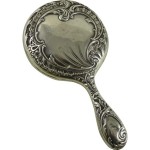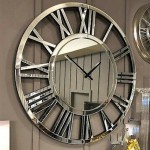Exploring the Functionality and Aesthetics of Dressing Tables With Mirror
Dressing tables with mirrors, also known as vanities or makeup tables, have been a staple in bedrooms and dressing rooms for centuries. These pieces of furniture serve a practical purpose by providing a dedicated space for grooming and makeup application, while simultaneously enhancing the aesthetic appeal of a room. The integration of a mirror is a crucial element, offering convenience and facilitating precision during personal care routines. The design, materials, and features of dressing tables with mirrors have evolved significantly over time, reflecting changing tastes and technological advancements.
The primary function of a dressing table with a mirror is to provide a designated area for personal grooming. This includes applying makeup, styling hair, and performing other skincare routines. The mirror allows for a clear and accurate reflection, ensuring that these tasks can be completed efficiently and effectively. Organized storage, often in the form of drawers and compartments, is another key feature. This storage space helps to keep cosmetics, brushes, jewelry, and other personal items neatly organized and within easy reach. A well-organized dressing table contributes to a more streamlined and enjoyable grooming experience.
Beyond their practical utility, dressing tables with mirrors also serve as decorative elements within a room. They can contribute significantly to the overall style and ambiance of the space. From antique designs crafted from ornate wood to modern minimalist styles featuring clean lines and reflective surfaces, dressing tables are available in a diverse range of aesthetics to complement various interior design schemes. The mirror itself can also be a design feature, whether it's a simple rectangular shape or an elaborate, framed piece.
The Historical Evolution of Dressing Tables
The history of the dressing table can be traced back to ancient civilizations, where rudimentary versions were used for personal adornment. In ancient Egypt, for example, individuals used polished metal surfaces as mirrors and stored cosmetics in decorative boxes. However, the dressing table as we know it began to take shape during the 17th and 18th centuries in Europe. These early dressing tables were often elaborate and ornate, reflecting the opulence of the aristocratic class. Crafted from fine hardwoods and adorned with intricate carvings and gilded details, they were symbols of wealth and status.
The design of these early dressing tables often incorporated multiple drawers and compartments for storing cosmetics, jewelry, and other personal items. Mirrors were typically small and handheld or attached to a stand. As glassmaking techniques improved, larger and more elaborate mirrors became integrated into the design. The emergence of specialized furniture making techniques, such as veneering and marquetry, further enhanced the aesthetic appeal of dressing tables during this period. These techniques allowed for the creation of intricate patterns and designs on the surface of the furniture.
During the Victorian era, dressing tables became more accessible to the middle class. While still retaining elements of ornamentation, the designs were simplified and mass-produced to meet the growing demand. The Industrial Revolution played a significant role in this shift, enabling the efficient production of furniture at lower costs. The late 19th and early 20th centuries saw the emergence of Art Nouveau and Art Deco styles, which influenced the design of dressing tables with flowing lines, stylized motifs, and geometric patterns.
In the mid-20th century, modernism brought about a shift towards simpler, more functional designs. Dressing tables became less ornate, emphasizing clean lines and minimalist aesthetics. The use of new materials, such as plywood and laminate, became more common, contributing to affordability and mass production. Today, dressing tables are available in a wide range of styles, from traditional to contemporary, catering to diverse tastes and preferences. The integration of technology, such as built-in lighting and USB charging ports, is a recent development that reflects the evolving needs of modern users.
Key Considerations When Choosing a Dressing Table
Selecting the right dressing table with a mirror involves careful consideration of several factors, including size, style, storage capacity, and the type of mirror. The size of the dressing table should be appropriate for the available space in the room. It is important to measure the area where the dressing table will be placed to ensure that it fits comfortably without overcrowding the room. The overall style of the dressing table should complement the existing décor and create a cohesive look. This includes considering the color, materials, and design details of the furniture.
Storage capacity is another crucial factor to consider. Assess the amount of storage space needed for cosmetics, brushes, jewelry, and other personal items. Choose a dressing table with an adequate number of drawers, compartments, or shelves to accommodate these items. The layout of the storage space should be practical and allow for easy access to frequently used items. The mirror is a central element of any dressing table. Consider the size, shape, and style of the mirror. A larger mirror provides a more comprehensive view, while a smaller mirror may be more suitable for smaller spaces. The mirror's frame should complement the overall design of the dressing table.
Lighting is also a significant aspect to consider. Adequate lighting is essential for applying makeup and performing other grooming routines accurately. Some dressing tables come with built-in lighting, such as LED bulbs or vanity lights. If the dressing table does not have built-in lighting, consider adding a separate vanity mirror with lights or installing overhead lighting that provides sufficient illumination. The height of the dressing table and the accompanying stool or chair should be comfortable for the user. This ensures that the user can sit comfortably for extended periods without experiencing strain or discomfort. The materials used in the construction of the dressing table should be durable and easy to maintain. Common materials include wood, metal, and glass.
The budget is a practical consideration. Dressing tables are available at a wide range of price points, depending on the materials, construction, and features. Determine a budget before starting the search and stick to it. Consider purchasing a second-hand or vintage dressing table to save money. If assembled is required, assess the user's ability to assemble it. Some dressing tables require professional assembly, which may add to the overall cost. Before making a purchase, read reviews from other customers to get an idea of the quality and durability of the dressing table. Pay attention to comments about the storage capacity, ease of assembly, and overall satisfaction with the product.
Modern Trends in Dressing Table Design
Contemporary dressing table designs are characterized by clean lines, minimalist aesthetics, and functional features. These designs often incorporate natural materials, such as wood and bamboo, to create a warm and inviting atmosphere. The use of sustainable and eco-friendly materials is also becoming increasingly popular. Many modern dressing tables feature built-in LED lighting, which provides energy-efficient and adjustable illumination. These lights can be controlled with a dimmer switch to create the perfect lighting conditions for applying makeup and performing other grooming routines.
Smart dressing tables are another emerging trend. These tables incorporate technology such as Bluetooth speakers, USB charging ports, and touch screen controls. Some smart dressing tables even have built-in sensors that can detect the user's presence and automatically turn on the lights and other features. Modular designs allow for customization and flexibility. These dressing tables can be configured in various ways to meet individual needs and preferences. They often include interchangeable drawers, shelves, and mirrors that can be arranged to create a personalized grooming station.
Space-saving designs are particularly popular in smaller apartments and homes. These dressing tables are designed to maximize storage and functionality without taking up too much space. They often include features such as fold-down mirrors, hidden compartments, and wall-mounted designs. Vintage and retro-inspired dressing tables are also experiencing a resurgence in popularity. These designs often feature classic shapes, ornate details, and vintage hardware. They can add a touch of elegance and nostalgia to any bedroom or dressing room. Color trends in dressing table design include neutral tones such as white, gray, and beige, as well as bolder hues such as navy blue, emerald green, and deep purple. The choice of color can significantly impact the overall aesthetic of the room.
Ultimately, the choice of a dressing table with a mirror is a personal one, influenced by individual needs, preferences, and budget. By considering the factors outlined above, individuals can select a piece of furniture that not only serves a practical purpose but also enhances the beauty and functionality of their space.

Attractive Mirror Dressing Table Designs For Beginners Foyer Design Modern

Elegant Hollywood Vanity Mirror Dressing Table Set With Adjustable 3 Color Led Lights

Bedroom Wood Modern Furniture White Vanity Dressing Table Dresser Makeup With Led Mirror Lights China Tables Made In Com

White Dressing Table With Touch Led Light Mirror Set

Solid Wood Single Pedestal Dressing Table Mirror Stool

Blisswood Dressing Table With Full Length Mirror Stool And Storage

Sophia White Dressing Table With Touch Sensor Led Mirror

Modern Trendy Dressing Table Mirror With Chair Designs Inspiration Classic Interior Design Luxury Room

2 Piece Set Savannah X Renee Bedroom Furniture White Dressing Table Touch Screen Led Light Rectangle Mirror Jewellery Storage Makeup Cabinet Modern Vanity Organiser

Wooden Bazar Wide Vanity With Mirror Dressing Table Desi








